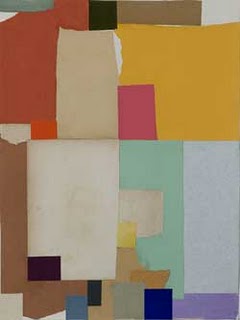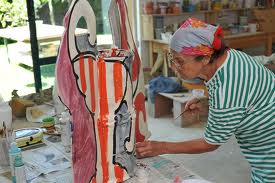Linda's Art Blog
This blog is for discussions on Art and Design in support of students, artists, and buyers of Art. It is a way to have some fun with my home studio and on-line students and anyone interested in Art History and current events. Comment on this blog as an opportunity to share recent shows and events and thoughts about your own art process.
Jam packed week of Art in Louisville and Lafayette
 Saturday, November 5, 2011 at 7:16PM
Saturday, November 5, 2011 at 7:16PM Whew. Last weekend was the Lafayette Community Art Show that is still up at the Lafayette Library. I juried
it on Friday and gave the awards on Sunday. I met new artists and saw some students and friends that I hadn't seen in a while. Here is Ruth Sollers piece from the Lafayette show. Isn't it great?

First Friday was a group show at CFA Gallery for Artist Appreciation Week. The reception was packed and I saw collectors and friends and it was hopping. The show is up for November with 3 pieces each artist. I was back at CFA to teach at 10:00am till 12:30 pm and then lunch at Cafe de Paris. I left the Arts District at 4pm after a quick hello to Teresa Reed...I spent 22 hours in the same block. Louisville is getting downright interesting. Oh yeah, I did go home to sleep.
DeKooning Show
 Thursday, October 20, 2011 at 6:52PM
Thursday, October 20, 2011 at 6:52PM MOMA has dedicated the 6th floor to showing over 500 of DeKooning's works.
Wish we were there:)
Here's Excavation from 1950

Leo Steinberg, Art Historian passes at 90.
 Tuesday, March 15, 2011 at 12:36PM
Tuesday, March 15, 2011 at 12:36PM "The Eye is Part of the Mind" Leo Steinberg's view that a work's artistic value lies not only in shape, line, color and the formal visual elements but in how they are applied to communicate content. thank you! rest in peace.
Cezanne
 Friday, December 17, 2010 at 11:28AM
Friday, December 17, 2010 at 11:28AM On December 11, we had an invigorating lesson and discussion on Cezanne. Any thoughts since then?
Cezanne
 Cezanne - Still Life with Fruit Basket
Cezanne - Still Life with Fruit Basket



